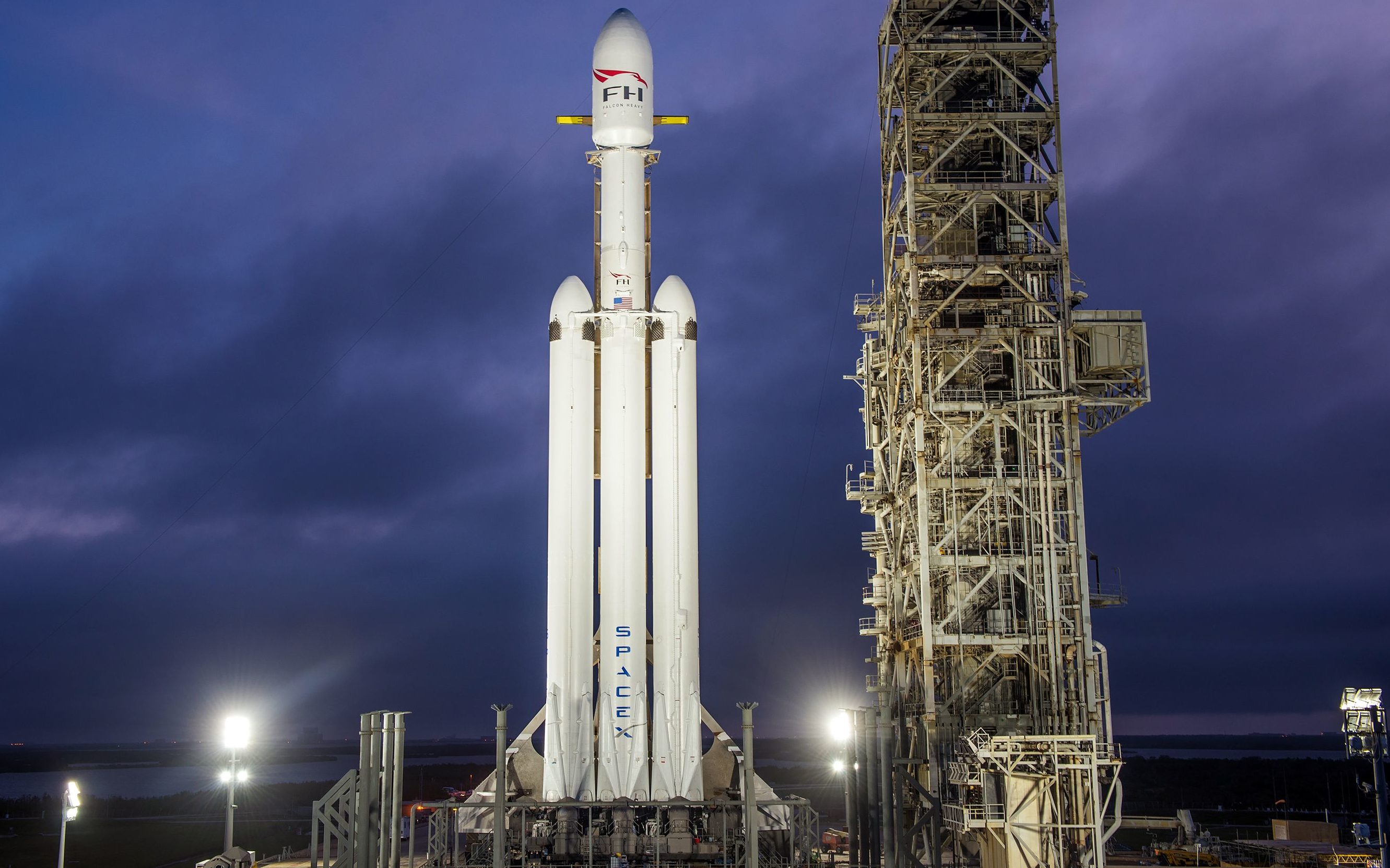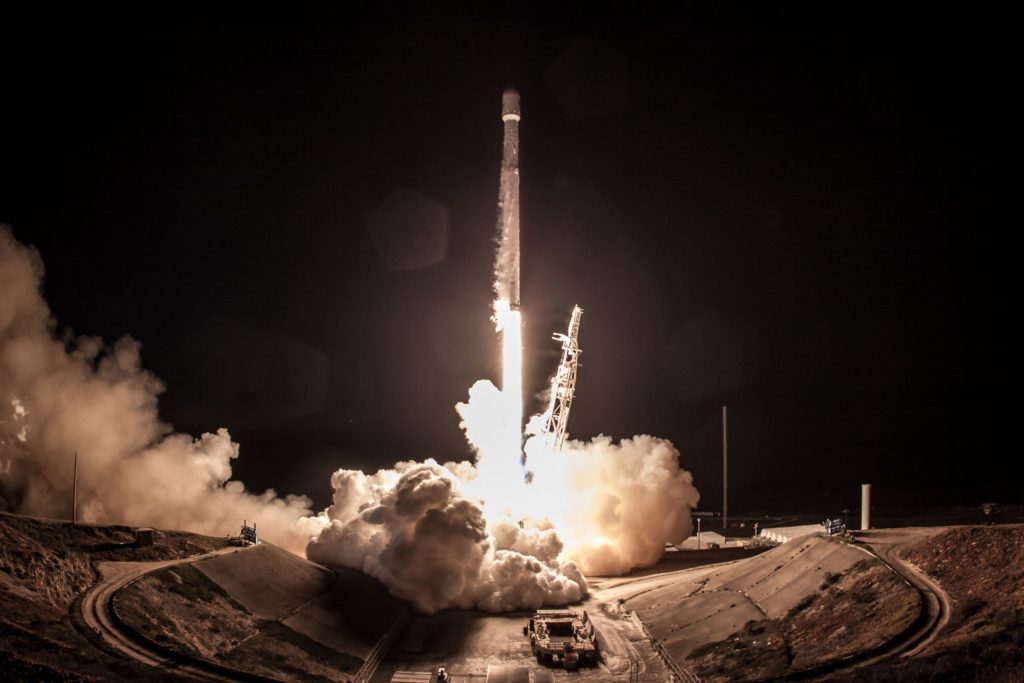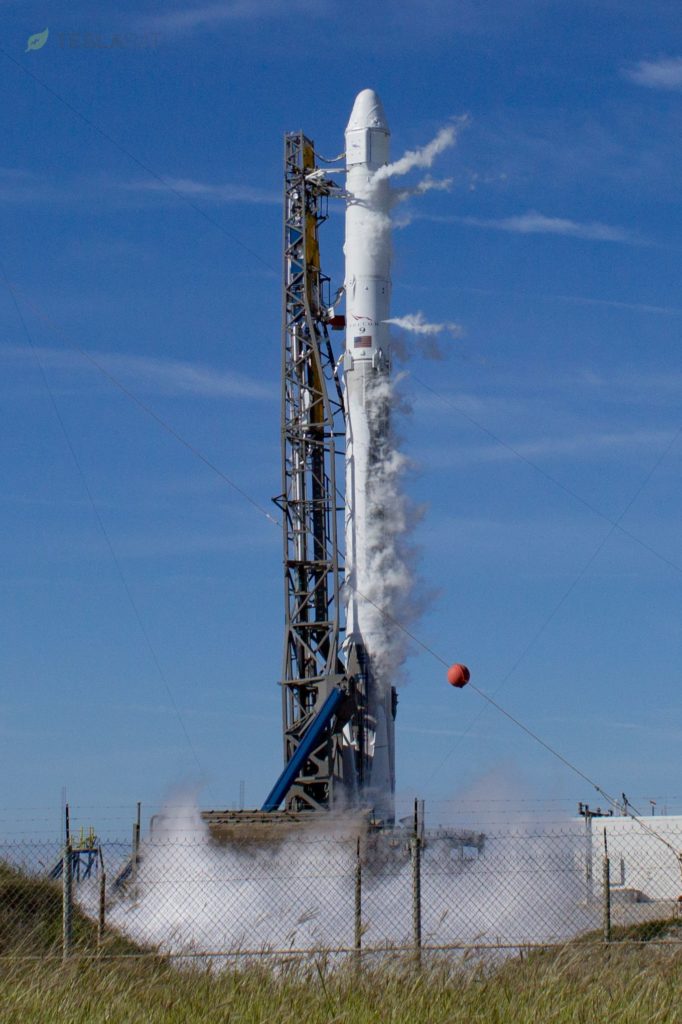

News
SpaceX Falcon Heavy testing delayed after government shutdown
As the U.S. Senate’s majority party searches for ten additional votes in order to end a federal government shutdown that began late Saturday, all “non-essential” activities at the country’s numerous government-operated space launch facilities have ground to an immediate halt and will remain in limbo until a funding bill compromise is hammered out.
While SpaceX is a wholly private space launch company, it relies almost unilaterally upon launch support and range expertise provided by NASA and the US Air Force, both in Cape Canaveral, FL and Vandenberg, CA. Sadly, the Air Force personnel SpaceX depend upon to conduct launches, static fires, and other ignition tests at its launch pads are not considered “essential” under regulations that prevent the federal government from coming to a complete halt in the event of a funding-related shutdown.
Unfortunately, a budget agreement wasn't reached, resulting in a gov't shutdown. This will unfortunately disrupt the lives and operations here at Patrick AFB. Go to https://t.co/yvmNBH1LMy for info on the current shutdown, impact on base resources, & financial resource options.
— Space Launch Delta 45 (@SLDelta45) January 20, 2018
SpaceX did appear to complete the most thorough round of Falcon Heavy testing yet late Saturday evening, the US Senate’s failure to either pass a continuing resolution or a new funding bill for the fiscal year led to a complete federal government shutdown soon after. As a result, nearly all of the US Air Force’s 45th Space Wing – a crucial backbone of East coast range and launch operations – was furloughed indefinitely, pending new funding from Congress. SpaceX had previously requested a new static fire date for Falcon Heavy on Monday, January 22 (today), a date that is now clearly going to move right for at least as long as the government lacks funding for basic launch operations.
Thankfully, activities like the extensive propellant loading tests that occurred on Saturday night do not technically require range support, so long as no engine ignition or static fire components are included. In the event of a catastrophic failure, the government-run range would be tasked with ensuring the safety of those in the vicinity and coordinating the emergency response that would immediately follow. This policy is brought somewhat into question by the failure of Amos-6 – although that Falcon 9 was being prepared for a static fire test, its highly-destructive failure is understood to have occurred at least five or more minutes before the planned point of ignition. Nevertheless, SpaceX will be able to continue some level of testing with Falcon Heavy, if needed.
Elsewhere, instability
While SpaceX’s Falcon Heavy has undoubtedly garnered magnitudes more eyeballs than the company’s Falcon 9 activities, the government shutdown could be far more consequential for SpaceX’s customers if it cannot be halted within a handful of days. A federal shutdown lasting several days is a hugely disruptive and damaging event on its own, lack of range support on the East coast could quickly begin to eat into SpaceX’s GovSat-1 preparations, the launch of which is targeting NET late January/January 30. For GovSat-1’s flight-proven booster, a static fire at the launch site is unlikely to be bypassed (SpaceX has never skipped a prelaunch static fire), and would typically occur no fewer than four or five days before launch. As a result, in the somewhat unlikely event that the shutdown stretches beyond the next several days, SpaceX customers SES and GovSat could see their launch delayed, an event that would likely bring financial consequences to the public-private satellite venture.
Looking slightly farther into the future, SpaceX’s flight-proven launch of PAZ and two of its own prototype communications satellites is just about two weeks away from its own static fire test, this time at the West Coast’s Vandenberg Air Force Base. Such an extended shutdown would be utterly unprecedented, but if 2017 and 2018 have done anything at all, they’ve tempered tendencies towards knee-jerk claims of “that’ll never happen!”
- A panorama of LC-39A in November 2017. (Tom Cross/Teslarati)
- SpaceX’s Vandenberg launch complex, SLC-4E, depends upon an Air Force range to operate. (SpaceX)
- LC-40, located in Cape Canaveral Air Force Station, is SpaceX’s second pad. (Tom Cross)
Here’s to hoping that Congress can get their act together and return to those they represent the bare minimum of federal stability, for both federal employees and those that depend upon them.
Update: After a solid two days of shutdown, the Senate has apparently reached an agreement to pass a continuing resolution that will maintain funding for another three weeks, after which a new FY2018 budget must be passed to avoid another shutdown. While this thankfully means that the impact to the Space Coast and the Air Force’s 45th Space Wing should be relatively small, I have left my above thoughts on the potential impacts of a longer shutdown untouched for posterity.
Senate has voted on an amended bill to fund U.S. government for 3 weeks. Bill now heads back to the House for debate & vote. If it passes the House without changes, the President then needs to sign it into law. Once all those things happen, the government reopens. Then… 1/2
— Chris G (@ChrisG_SpX) January 22, 2018
Follow along live as launch photographer Tom Cross and I cover these exciting proceedings as close to live as possible.
Teslarati – Instagram – Twitter
Tom Cross – Instagram
Eric Ralph – Twitter
News
Tesla UK sales see 14% year-over-year rebound in June: SMMT data
The SMMT stated that Tesla sales grew 14% year-over-year to 7,719 units in June 2025.

Tesla’s sales in the United Kingdom rose in June, climbing 14% year-over-year to 7,719 units, as per data from the Society of Motor Manufacturers and Traders (SMMT). The spike in the company’s sales coincided with the first deliveries of the updated Model Y last month.
Model Y deliveries support Tesla’s UK recovery
Tesla’s June performance marked one of its strongest months in the UK so far this year, with new Model Y deliveries contributing significantly to the company’s momentum.
While the SMMT listed Tesla with 7,719 deliveries in June, independent data from New AutoMotive suggested that the electric vehicle maker registered 7,891 units during the month instead. However, year-to-date figures for Tesla remain 2% down compared to 2024, as per a report from Reuters.
While Tesla made a strong showing in June, rivals are also growing. Chinese automaker BYD saw UK sales rise nearly fourfold to 2,498 units, while Ford posted the highest EV growth among major automakers, with a more than fourfold increase in the first half of 2025.
Overall, the UK’s battery electric vehicle (BEV) demand surged 39% to to 47,354 units last month, helping push total new car sales in the UK to 191,316 units, up 6.7% from the same period in 2024.
EV adoption accelerates, but concerns linger
June marked the best month for UK car sales since 2019, though the SMMT cautioned that growth in the electric vehicle sector remains heavily dependent on discounting and support programs. Still, one in four new vehicle buyers in June chose a battery electric vehicle.
SMMT Chief Executive Mike Hawes noted that despite strong BEV demand, sales levels are still below regulatory targets. “Further growth in sales, and the sector will rely on increased and improved charging facilities to boost mainstream electric vehicle adoption,” Hawes stated.
Also taking effect this week was a new US-UK trade deal, which lowers tariffs on UK car exports to the United States from 27.5% to 10%. The agreement could benefit UK-based EV producers aiming to expand across the country.
News
Tesla Model 3 ranks as the safest new car in Europe for 2025, per Euro NCAP tests
Despite being on the market longer than many of its rivals, the Tesla Model 3 continues to set the bar for vehicle safety.

The Tesla Model 3 has been named the safest new car on sale in 2025, according to the latest results from the Euro NCAP. Among 20 newly tested vehicles, the Model 3 emerged at the top of the list, scoring an impressive 359 out of 400 possible points across all major safety categories.
Tesla Model 3’s safety systems
Despite being on the market longer than many of its rivals, the Tesla Model 3 continues to set the bar for vehicle safety. Under Euro NCAP’s stricter 2025 testing protocols, the electric sedan earned 90% for adult occupant protection, 93% for child occupant protection, 89% for pedestrian protection, and 87% for its Safety Assist systems.
The updated Model 3 received particular praise for its advanced driver assistance features, including Tesla’s autonomous emergency braking (AEB) system, which performed well across various test scenarios. Its Intelligent Speed Assistance and child presence detection system were cited as noteworthy features as well, as per a WhatCar report.
Other notable safety features include the Model 3’s pedestrian-friendly pop-up hood and robust crash protection for both front and side collisions. Euro NCAP also highlighted the Model 3’s ability to detect vulnerable road users during complex maneuvers, such as turning across oncoming traffic.
Euro NCAP’s Autopilot caution
While the Model 3’s safety scores were impressive across the board, Euro NCAP did raise concerns about driver expectations of Tesla’s Autopilot system. The organization warned that some owners may overestimate the system’s capabilities, potentially leading to misuse or inattention behind the wheel. Even so, the Model 3 remained the highest-scoring vehicle tested under Euro NCAP’s updated criteria this year.
The Euro NCAP’s concerns are also quite interesting because Tesla’s Full Self-Driving (FSD) Supervised, which is arguably the company’s most robust safety suite, is not allowed for public rollout in Europe yet. FSD Supervised would allow the Model 3 to navigate inner city streets with only minimal human supervision.
Other top scorers included the Volkswagen ID.7, Polestar 3, and Geely EX5, but none matched the Model 3’s total score or consistency across categories. A total of 14 out of 20 newly tested cars earned five stars, while several models, including the Kia EV3, MG ZS, and Renault 5, fell short of the top rating.
Elon Musk
Why Tesla’s Q3 could be one of its biggest quarters in history
Tesla could stand to benefit from the removal of the $7,500 EV tax credit at the end of Q3.

Tesla has gotten off to a slow start in 2025, as the first half of the year has not been one to remember from a delivery perspective.
However, Q3 could end up being one of the best the company has had in history, with the United States potentially being a major contributor to what might reverse a slow start to the year.
Earlier today, the United States’ House of Representatives officially passed President Trump’s “Big Beautiful Bill,” after it made its way through the Senate earlier this week. The bill will head to President Trump, as he looks to sign it before his July 4 deadline.
The Bill will effectively bring closure to the $7,500 EV tax credit, which will end on September 30, 2025. This means, over the next three months in the United States, those who are looking to buy an EV will have their last chance to take advantage of the credit. EVs will then be, for most people, $7,500 more expensive, in essence.
The tax credit is available to any single filer who makes under $150,000 per year, $225,000 a year to a head of household, and $300,000 to couples filing jointly.
Ending the tax credit was expected with the Trump administration, as his policies have leaned significantly toward reliance on fossil fuels, ending what he calls an “EV mandate.” He has used this phrase several times in disagreements with Tesla CEO Elon Musk.
Nevertheless, those who have been on the fence about buying a Tesla, or any EV, for that matter, will have some decisions to make in the next three months. While all companies will stand to benefit from this time crunch, Tesla could be the true winner because of its sheer volume.
If things are done correctly, meaning if Tesla can also offer incentives like 0% APR, special pricing on leasing or financing, or other advantages (like free Red, White, and Blue for a short period of time in celebration of Independence Day), it could see some real volume in sales this quarter.
You can now buy a Tesla in Red, White, and Blue for free until July 14 https://t.co/iAwhaRFOH0
— TESLARATI (@Teslarati) July 3, 2025
Tesla is just a shade under 721,000 deliveries for the year, so it’s on pace for roughly 1.4 million for 2025. This would be a decrease from the 1.8 million cars it delivered in each of the last two years. Traditionally, the second half of the year has produced Tesla’s strongest quarters. Its top three quarters in terms of deliveries are Q4 2024 with 495,570 vehicles, Q4 2023 with 484,507 vehicles, and Q3 2024 with 462,890 vehicles.
-

 Elon Musk4 days ago
Elon Musk4 days agoTesla investors will be shocked by Jim Cramer’s latest assessment
-

 News1 week ago
News1 week agoTesla Robotaxi’s biggest challenge seems to be this one thing
-

 Elon Musk2 weeks ago
Elon Musk2 weeks agoFirst Look at Tesla’s Robotaxi App: features, design, and more
-

 News2 weeks ago
News2 weeks agoSpaceX and Elon Musk share insights on Starship Ship 36’s RUD
-

 News2 weeks ago
News2 weeks agoWatch Tesla’s first driverless public Robotaxi rides in Texas
-

 News1 week ago
News1 week agoWatch the first true Tesla Robotaxi intervention by safety monitor
-

 News2 weeks ago
News2 weeks agoTesla has started rolling out initial round of Robotaxi invites
-

 Elon Musk2 weeks ago
Elon Musk2 weeks agoTesla to launch in India in July with vehicles already arriving: report





















